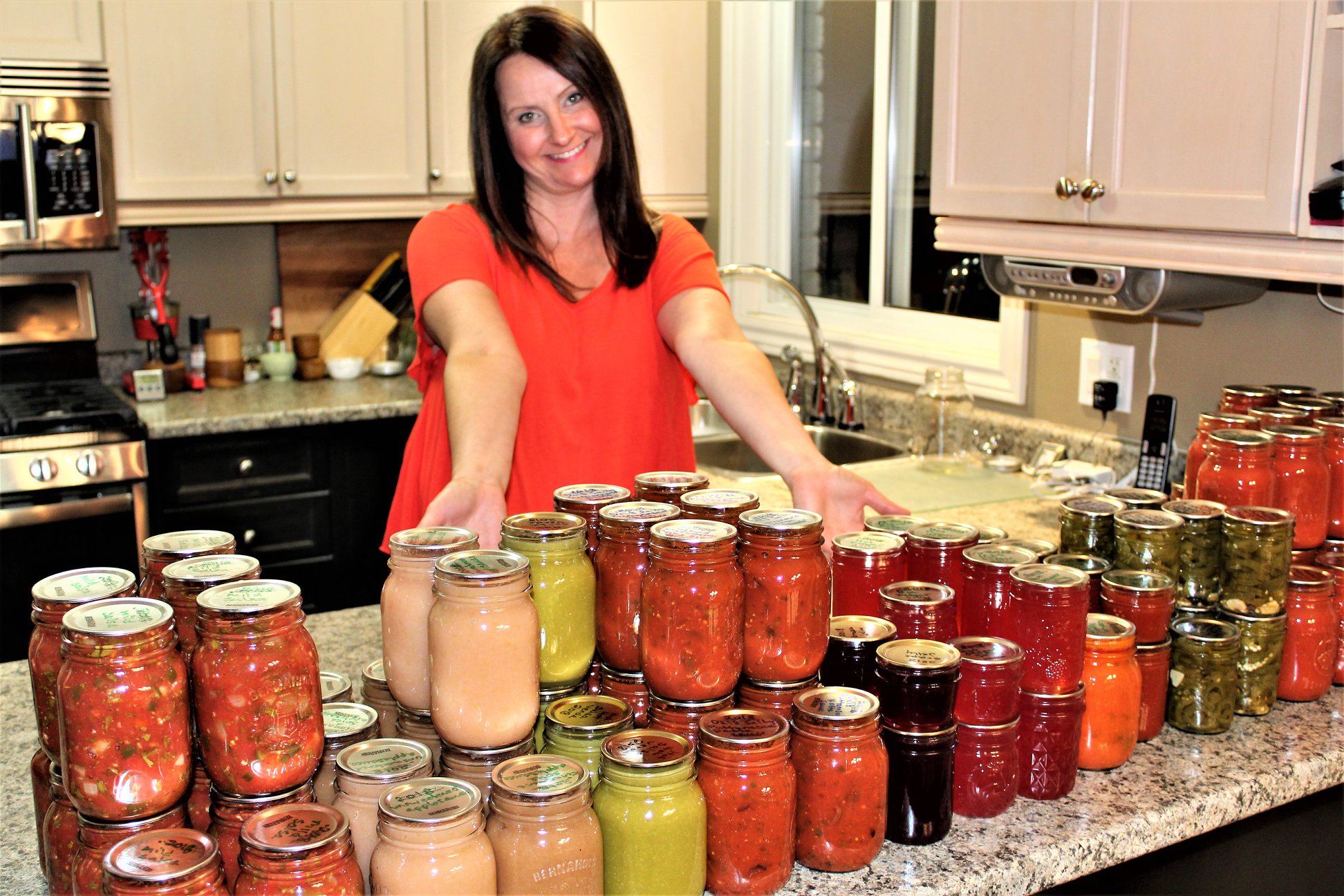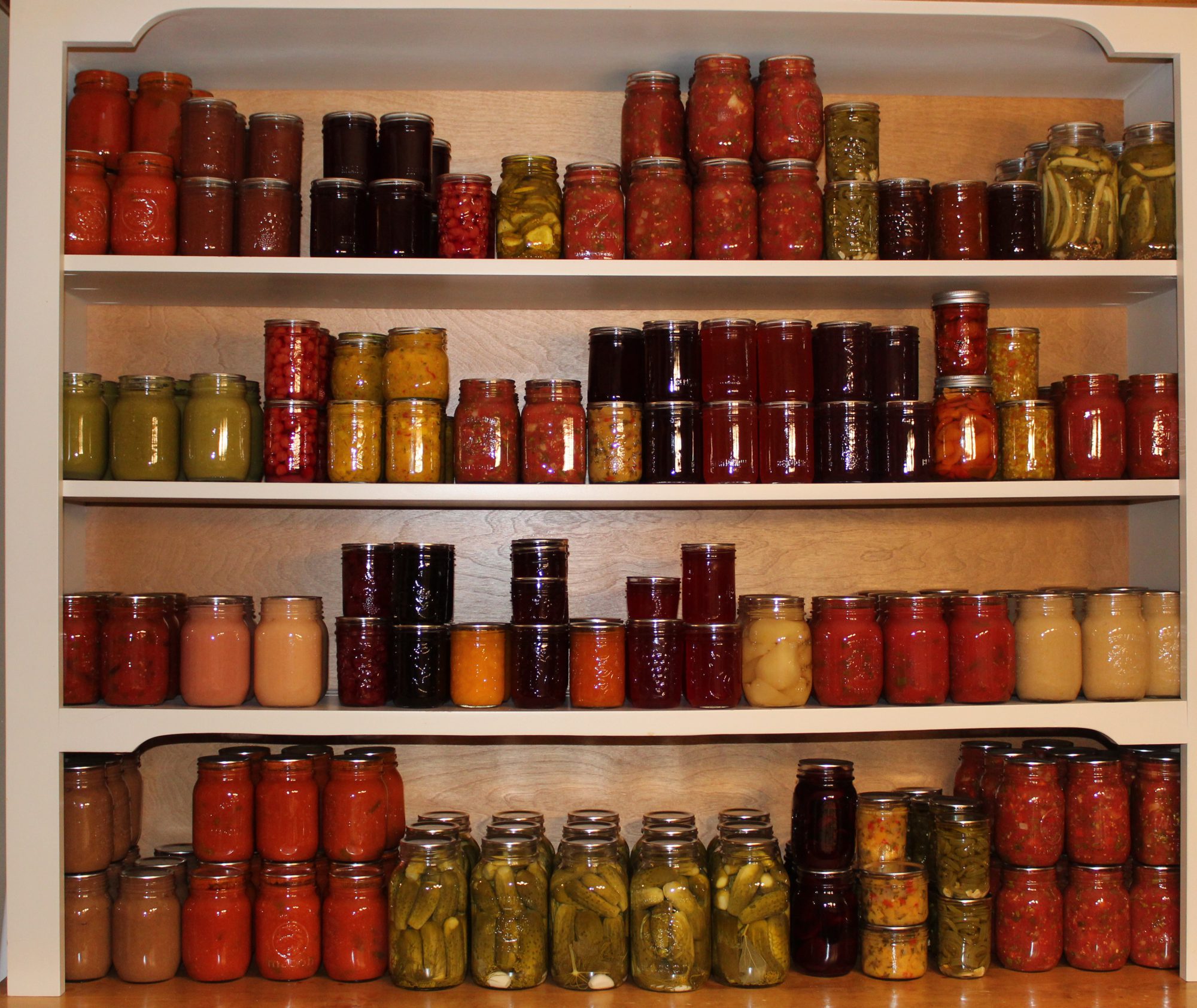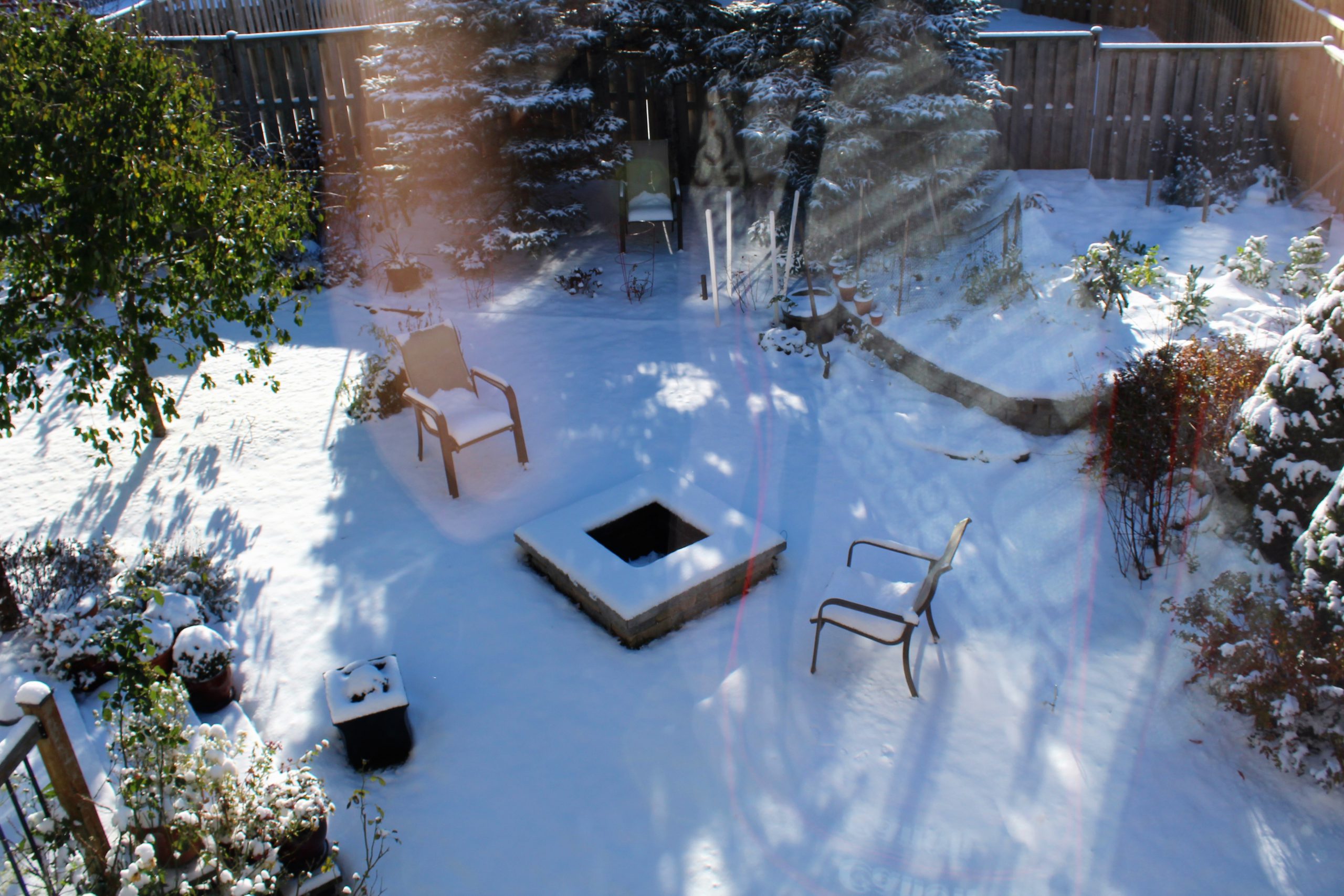
Well, it has been a busy couple of months! For starters, I have added over 150 recipes to the Cansanity website and taken some incredibly interesting photos of delicious food and fun gardening projects, which will be featured in some upcoming blogs. It has been eleven months since I first published the website and I feel I have only scratched the surface on all the gardening and cooking tips that I want to share with you. This is so exciting for me because I am loving this journey. I want to say I am so thankful to all of you for supporting Cansanity by following the posts on all the social media platforms, including Facebook, Instagram, YouTube and Pinterest. You make my day when you like, comment and share the posts and I hope Cansanity has been a wonderful distraction from the COVID-19 pandemic for you; it sure has been for me!
As November draws to a close, I want to share with you some of the ways I put the garden to bed for the winter. To begin, we have rabbits that frequent our yard in the winter, and so we have found that putting up a temporary fence around the roses protects the bark.
Rabbits have amazing jaws and will gnaw at these plants – thorns and all. Even though roses are pretty hardy and have withstood considerable damage in past years, I find that protecting them this way gives me peace of mind that the roses will come back strong and healthy the following year. If you grew roses for the first time this year, you should not prune them until the spring. The rose hips that form on the stems signal the rose to go dormant. They may look scraggly this winter but just leave them. In 2021, I will be doing a series of blogs talking about roses. So, if that is of interest to you, stay tuned.
I have a raspberry patch near the back fence, and once the last leaves fall from the plants, I like to get in there and prune the canes. By cutting the canes back by a third, I encourage new growth and more berries the following year. While I’m in there, I will also find those canes that have died, and I remove them, making the patch tidier and more pleasing to look at.
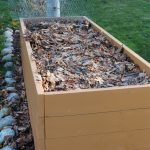
For my garden boxes in which I planted garlic, we rake up the leaves and add them to the top of the box. This does two things. First, it acts as a blanket to protect the soil from wind and rain erosion, and then secondly, as they start to decay, the leaves add compost to the box.
The garden boxes that we leave empty without any winter plantings are just amended with some well rotted cow manure and compost, and the soil is turned over, leaving the box set for early planting in March the following year. You can leave the amendments to the following spring, but I like to do it in the fall so that as soon as the ground is workable, I can plant.
For the many dozens of planters that housed flowers or vegetables, we remove the soil and add it to our raised vegetable garden. We turn the soil over and leave it for early planting the next spring. The potting soil has vermiculite or perlite and adding it to your garden soil will help with the quality of your soil. Once emptied, I like to clean the containers and put them away in the garage, as this will prevent the cold weather from causing cracks in the containers. I do, however, leave my 3’ Mayne garden boxes half full of dirt on my deck and have not had any problems with them cracking or getting damaged.
Most of the plants that were in our gardens or pots are composted but there are some exceptions. We never compost kale, Brussels sprouts, cabbage, broccoli, cauliflower or any of the plants from the Brassica family. If you compost these plants, you may be overwintering pests like the cabbage moth which will lead to damage to the leaves of brassicas the following year. We always, however, remove them from the garden. You may be tempted to leave the kale in the garden because it might come back the following spring. But in doing so, you may be encouraging pests like the cabbage moth, which will overwinter even in extreme winter temperatures.
One other tip to deter pests overwintering in your garden is to create hills in the garden. By doing this, when the temperature drops to the frigid, the cold is more likely to penetrate through the soil and kill off pests.
Plants I leave in the garden boxes include herbs like parsley, thyme and sage, which will continue to hold onto their leaves even after a couple of light snowfalls and low overnight temperatures. I can usually harvest my parsley well into December.
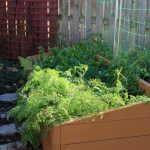
Root vegetables like carrots and beets can stay in the soil until you are ready to use them. I usually harvest carrots right up until the ground freezes, but I do have to say that I have left carrots in over the winter and have harvested them the following spring too!
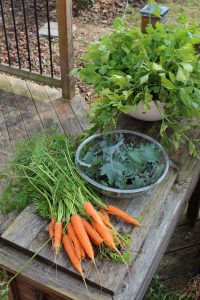
I love growing celery even though it takes a long time to develop in the garden. I usually leave most of my celery in the garden until the snow accumulates. When the snow is here to stay, I harvest the remaining celery and make chicken or vegetable stock that I then pressure can or freeze for the winter.
Now, like I said, I do take out all the brassicas plants and toss in the garbage but some I leave until the winter sets in because kale and Brussels sprouts can withstand a couple light snowfalls. So, before you pull out the plants and discard them, get the most out of the plants by using them in your fall recipes. And when the snow looks like it is there to stay, remove the plants.
I have only touched the surface of all the information I plan on sharing with you. I look forward to expanding on this content in future blogs, and I am very excited about new topics to be covered. As we move into December and the holiday season, I will be sharing my favourite Christmas recipes and, for those that are following Cansanity for canning recipes and tips, stay tuned because the “Cansanity” has just begun!
